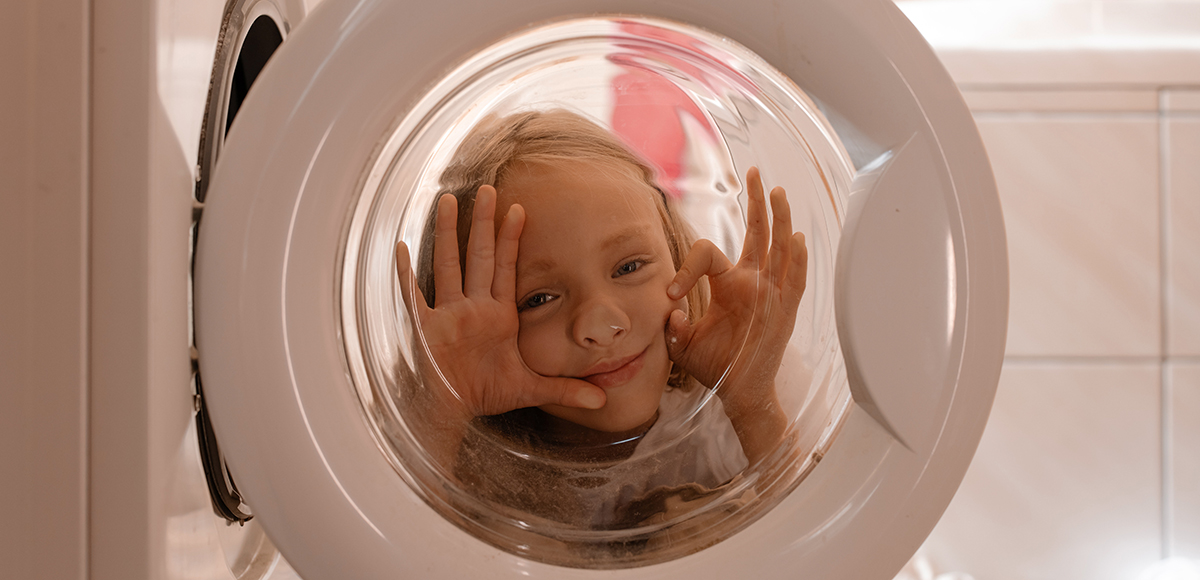8 SEP 2025
We live in a world where our technology can work smarter, not harder. Even our washing machines and dishwashers can contain sensors that automatically choose the right setting, or functions that can start a cycle with the click of a remote control. However, one setting that most modern appliances have is an ‘eco’ mode.
But what does this ‘eco’ mode really do? Does it actually save energy, and is it better for the environment?
Let’s dig in and find out if ‘eco’ modes are indeed better for the environment and your energy bills.

What is ‘eco’ mode?
You’ve probably seen it before: ‘eco’ or ‘economy’, ‘water saving’, ‘energy saving’. Whatever the label, its aim is for your appliances to use less power and water while still getting the job done.
So how does it work?
The manufacturers set these functions to have different configurations of water temperature, water levels, and cycle times. So yes, eco modes might take longer, but that’s because they use colder water, and in some cases, less of it*. They’re working smarter, not harder.
Tip: Don’t forget to use your timer settings to further save on energy by setting it to turn off while you are out.
* ‘Eco mode’ can vary between models and brands. If you’re curious about what it means for your appliance, check your manual (it’s probably in your junk drawer).
If it’s supposed to be ‘eco’ friendly, why is the cycle longer? Does a longer wash cycle mean that it uses more energy?
Eco mode is all about taking its time, using lower temperatures (since heating the water takes up most of the energy) and letting the detergent work its magic, rather than tackling it with heat and the force of the water.
Should you always use it?
Short answer: not always.
Eco mode is great for everyday washes. However, if you’re dealing with heavy-duty stains or a packed dishwasher, you might need to bite the bullet and put the occasional hot wash on.
The table below shows an example of the different modes of a household's dishwasher and washing machine.
Dishwasher
| Cycles | Degree of soil + Type of load | Typical program phases | Duration (minutes) | Energy (kWh – kilowatt-hour) | Water (Litres) |
|---|---|---|---|---|---|
| Eco | Normal soil Mostly crockery and cutlery | Prewash Wash Rinse Dry | 227 | 1.039 | 11 |
| Heavy Duty Wash | Heavy Soil Crockery, cutlery, pots and pans | Prewash Wash Rinse Dry | 155-170 | 1.5-1.7 | 14-15 |
| Normal Wash | Normal Soil Crockery and cutlery | Prewash Wash Rinse Dry | 130-140 | 1.4-1.6 | 15-17 |
| Quick Wash | Fresh soil Crockery and cutlery | Wash Rinse | 30 | 0.8 | 10 |
| Rinse | All | Prewash | 14 | 0.1 | 5 |
Washing machine
| Cycles | Capacity | Program time | Energy consumption (kWh/cycle) | Water consumption (L/cycle) | Maximum temperature (°C) |
|---|---|---|---|---|---|
| Eco | 9 | 3 hrs 45 mins | 0.809 | 71 | 31 |
| Eco | 4.5 | 3 hrs | 0.509 | 46 | 27 |
| Eco | 2.5 | 2 hrs 30 mins | 0.126 | 36 | 21 |
| Cotton 20°C | 9 | 3 hrs 15 mins | 0.357 | 117 | 20 |
| Cotton 60°C | 9 | 2 hrs 30 mins | 1.504 | 134 | 60 |
| Synthetics 40°C | 4 | 2 hrs 30 mins | 0.680 | 68 | 40 |
| Quick Wash Cold | 2 | 15 mins | 0.015 | 43 | 15 |
Source: Is Eco Mode Your Best Bet on Your Electric Appliances?
What else can help me save energy?
Fun fact: Over 40% of microwaves in NZ used more electricity over a year keeping the clock and keyboard lit than they did heating food.
Tweaking how you use your appliances can make a real difference—not just for your power bill, but for saving water and energy too. Small changes, big impact.
For independent complaint or pricing advice, click here. UDL & Powerswitch can help.
To read our Residential Consumer Care policy on how we'll keep you safe and connected, click here.